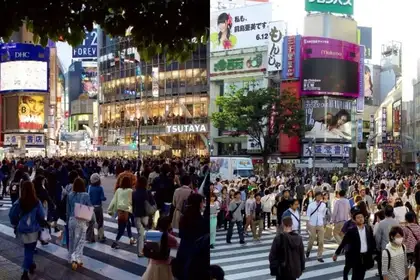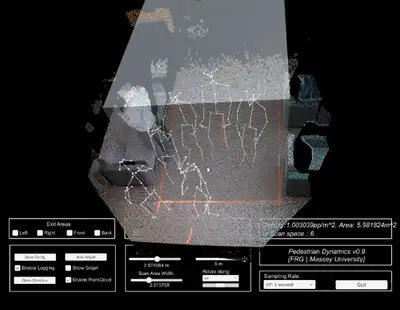
Crowds in the public environment.
Associate Professor Ruggiero Lovreglio from Te Kunenga ki Pūrehuroa Massey University’s School of Built Environment and Senior Lecturer Dr Milad Haghani from The University of New South Wales co-authored the journal article entitled ‘Data-based tools can prevent crowd crushes’.
Their research indicates the formation of mass crowds, in the absence of external danger, should not pose a threat to human lives. However, deadly crowd crush incidents, such as the tragedy in Seoul on 29 October 2022 continue to occur.
The researchers say the Seoul incident was similar to several recent catastrophes - all of which involved an unpredictable crowd size, a restrictive space with no exit routes, unrestricted entry, and the absence of real-time density monitoring. Dr Lovreglio and Dr Haghani claim the existing science of crowds can help to prevent future crowd crush disasters.

Associate Professor Ruggiero Lovreglio
Dr Lovreglio says the principles of crowd turbulence are well understood, and the connection to crowd density is clear.
“When a crowd of several thousands of humans reaches critical density levels of eight to 10 persons per square metre, the crowd acts like a continuous body or fluid. Individuals lose control of their movement, and any small turbulence could magnify and propagate through the crowd, potentially creating instability, falls, and injuries.
“In such a scenario, there is little that individuals can do once trapped. The description of such incidents as a crowd ‘stampede’ implying misbehaviour on the part of the people, obscures the root causes and hinders prevention, when solutions are available,” Dr Lovreglio adds.
The research illustrates crowd management needs to be recognised as a specialty and should be outsourced to professionals within the industry who have the expertise and tools to conduct estimation of the expected crowd size, risk analysis, and most importantly, real-time monitoring and control. Dr Lovreglio says the role of computer-vision and artificial intelligence methods in real-time estimation of flow and density is critical.
“Although an element of unpredictability may always exist in terms of the exact crowd size, especially in the case of events with no ticket sales, crowd simulation tools and AI monitoring systems can provide the ability to observe early signs of overcrowding and take appropriate actions in real time. It is important that interventional measures are implemented before the critical density levels and crowd instability are reached,” he says.
Two metrics are key in making such determinations, Dr Lovreglio adds.
“Crowd density in a restricted area gives insight into the current state of the crowd, and the crowd flow provides information about the input rate, and thereby, the rate at which density is increasing. These two metrics together can provide an estimate of the time that it may take for the crowd to reach critical density levels.”
A range of methodologies developed by computer vision scientists apply AI to infer these important parameters from real-time surveillance video footage.
Real-time estimation of crowd sentiment, using indicators such as social media activity, could further inform real-time interventional decisions as shown in the prototype developed by Dr Lovreglio in the below figure:

Automated AI camera system for automatic density measurement developed at Massey University by Dr Lovreglio and the PhD candidate at UoA Prasanth Sasikumar. This project was funded by the Fire Research Group Ltd.